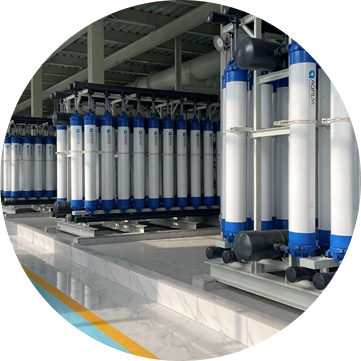Seawater Desalination


With the impact of global population growth, accelerated urbanization, and climate change, the shortage of freshwater resources has become increasingly severe. As a new source of water, seawater desalination can increase the total amount of freshwater without being affected by time, space, or climate, ensuring stable water supply for drinking water in coastal areas and make-up water for industrial boilers. It is a crucial approach to address water scarcity. Seawater desalination can provide industrial water for water-intensive industries in coastal areas, such as power, petrochemical, and steel, promoting the development of these industries. Meanwhile, it drives the growth of seawater desalination equipment manufacturing and related industries in surrounding areas, such as machinery, chemicals, and materials, forming an industrial agglomeration effect. With our nanofiltration (NF) and ultrafiltration (UF) technologies, we can achieve the following goals:
Remove large particulate matter and colloids: Seawater contains a large amount of suspended particles, sediment, algae, microorganisms, and colloidal substances.
Reduce microbial content: Various microorganisms such as bacteria and viruses are present in seawater.
Alleviate organic pollution: Seawater contains certain organic matters such as humic acid, proteins, and polysaccharides. Ultrafiltration (UF) membranes can retain partial macromolecular organic matter, preventing them from entering the reverse osmosis (RO) system.

Weihai a Certain Power Generation Seawater Desalination Project (Phase I) uses seawater as the water source. Through the treatment process of V-type filter tank + ultrafiltration + reverse osmosis, the desalinated seawater is supplied as municipal drinking water to the municipal pipeline network. The construction scale of Phase I is 30,000 tons/day of desalinated water, and the internal pressure type ultrafiltration membrane is selected for the filtration mode.The seawater desalination system generally operates when the water temperature is 2-3℃ in winter. Low temperature increases the viscosity coefficient of water, which enhances the membrane filtration resistance. Moreover, temperature has a significant impact on the water production flux of the membrane. Therefore, the key to this project is to ensure full-load long-term stable operation under low-temperature conditions.